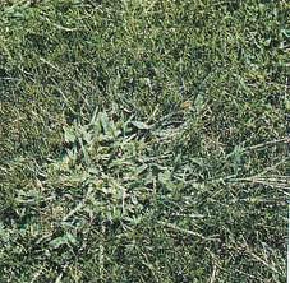Crabgrass
Do you dream of a lawn soft enough to walk on barefooted? One hurdle to this is crabgrass. Get rid of crabgrass now and reap the benefits later! Read on for more information or call us at (801) 261-1171 for a Free Quote!
Crabgrass is an unwanted annual plant that commonly invades turf grass areas. This unsightly weedy grass becomes evident during the midsummer months as it forms light green patches in the lawn. Crabgrass becomes an established weed by tolerating the conditions that allow it to be more competitive than the desirable lawn grasses.
The Plant:
Crabgrass begins its life cycle by seed germination. Germination occurs throughout the season when soil temperatures remain above 55° F. However, the problem crabgrass seedlings are those that develop in late spring. These crabgrass seedlings will thrive in lawns which are not vigorously growing or which have been thinned by drought, disease or other stress factors. During the midsummer months, the crabgrass plant matures into a light green, coarse-textured grass with finger-like seed heads that produce thousands of seeds. These seeds are deposited in the soil as the plant ends its life cycle with the first frosts of fall. Crabgrass seeds remain viable in the soil for several years, ready to germinate when the opportunity is provided. Seeds may also be disseminated into a lawn from other crabgrass plants in adjacent areas. Thus, crabgrass control requires a continuous treatment program.
Practices for Control:
1. Spring fertilization will enhance the vigor of the lawn. This results in a dense turf that resists crabgrass invasion.
2. Because crabgrass is a prolific seed producer, fertilization programs providing spring pre-emergence control products to prevent crabgrass seedlings from germinating are essential in controlling crabgrass.
3. 3. Before collecting lawn clippings, water in the application to flush the pre-emergence control into the soil. Otherwise, the pre-emergence weed control treatment may be removed with the clippings.
4. Maintain a 2” to 3” mowing height throughout the season to allow desirable lawn grasses to compete more successfully with crabgrass.
5. Do not line trim or weed whack the edges of the lawn or around sprinkler heads. This reduces competition from healthy, desirable grasses and exposes soil, allowing germination and growth of crabgrass.
The Green Pointe staff is always ready to assist you with your lawn. Please call if we may provide any information to enhance your lawn’s health or appearance.
Please call our office if you have any questions or visit our “Questions” page to review other frequently asked questions and answers. (801) 261-1171
 Green Pointe Lawn Care
Green Pointe Lawn Care 